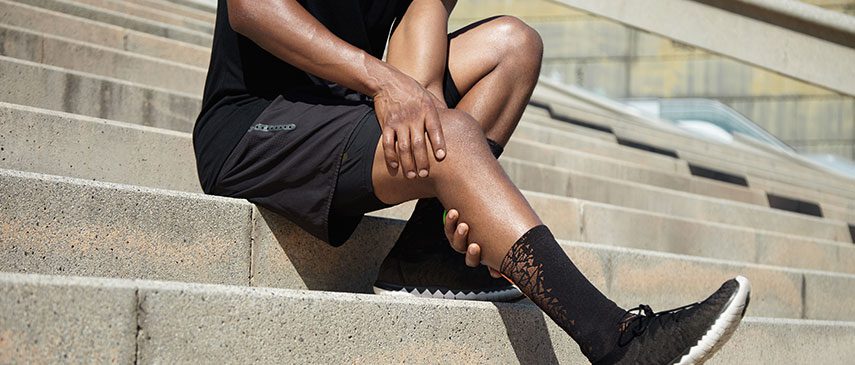Injury prevention with Dr. Brittany Moran and Hyland’s Leg Cramps
The key to staying healthy is working within your body's capacity to handle stress

Whether you’re training for a specific goal race, trying to continue a run streak or simply running to stay sane, nothing is worse than being sidelined with an injury. From acute issues like mid-run leg cramps to chronic pain like runner’s knee, even the smallest ache or pain can ruin a good run. We spoke with chiropractor Dr. Brittany Moran from the Runner’s Academy in Toronto, who gave us advice on how to prevent injuries so you don’t end up missing weeks of training.

RELATED: Why do you get cramps while running?
We often try to blame an injury on one specific thing (“If only I hadn’t done that one workout” or “I knew I shouldn’t have run that long“), but in reality, Moran says that injuries are usually caused by a number of factors that build up over time.
“There are many reasons why injuries might happen,” she says, “but the biggest thing is that our bodies can only adapt so much. If we put too much stress on the body from training or otherwise, we run the risk of reaching our capacity and no longer being able to adapt and that is when injury or burnout can happen.”
She explains that it’s not just running that impacts where that line is. Your brain can only take on so much stress and it does not decipher between physical, emotional or mental stress, so runners need to take into consideration stressors outside of running that may be contributing to injuries. Typically, the easiest stressor to shut down is physical, so if you’re going through a particularly challenging time at work or in your personal life, it might be wise to ease up on your running volume and intensity while you navigate those other issues.
“Basically with injuries it means you’ve reached your capacity to adapt to the stressors,” says Moran.
https://www.instagram.com/p/CNdEILnnOON/?utm_source=ig_web_copy_link
The good news is there are things you can do to increase your body’s capacity to handle stress. This includes following a varied training program, keeping your easy days easy, making rest and recovery a priority, working on efficient running mechanics and strength training. All of these things can have a positive impact on your injury threshold. Moran adds that products like muscle remedies (such as Hyland’s Leg Cramps) are also good to have in your toolbox for smaller issues like leg cramps to allow you to train consistently, but you shouldn’t rely on them. If you find you’re having to use them frequently, you should speak with a professional to figure out why you’re having the same issue over and over again.
The bottom line is you want to be as prepared as you can be for the task (in this case, running) and to have the capacity to succeed. To ensure this, Moran recommends runners do the following:
Seek supportive care: If you’re able, make regular appointments with a physiotherapist, chiropractor or other sports medicine practitioner (bonus points if they are experienced with runners) to keep your body moving well and to not allow little issues to become bigger issues. The intent is to be proactive and deal with any niggles or aches/pains that come up before they become injuries.
Practice a consistent mobility routine: this allows you to gain more body awareness and pick up on subtle changes side to side and day-to-day. If these persist and get worse it could be an indication that something is wrong and therefore needs some extra attention before letting it go too long and risking it becoming an injury.
Do run-specific strength training: running is a huge demand on our body so it needs to be strong enough to handle this impact.
Work on your form: running more efficiently may decrease the load at certain areas in the body, which can help that area to better withstand fatigue. For example, overstriding creates a braking force that your body must take on, landing under yourself with a vertical shin angle allows the
body to use the forces to its advantage.


